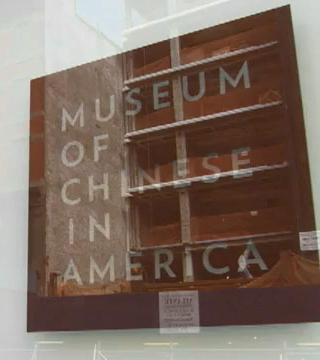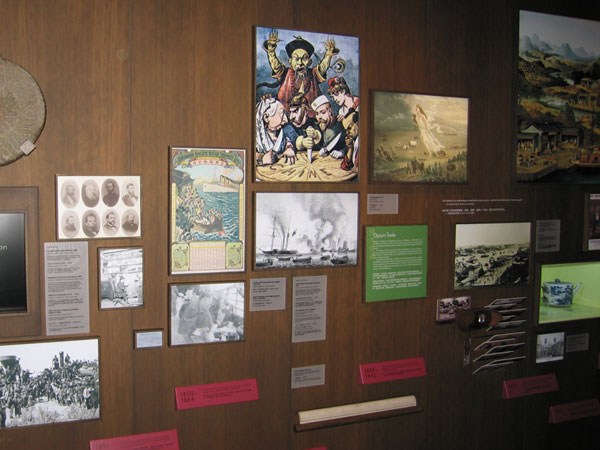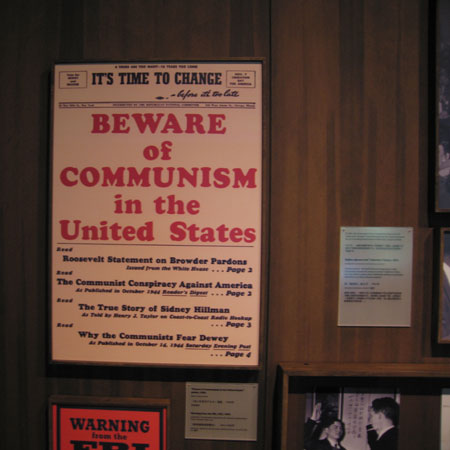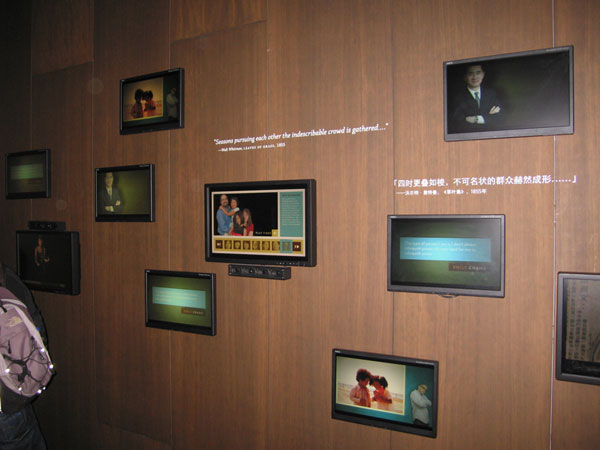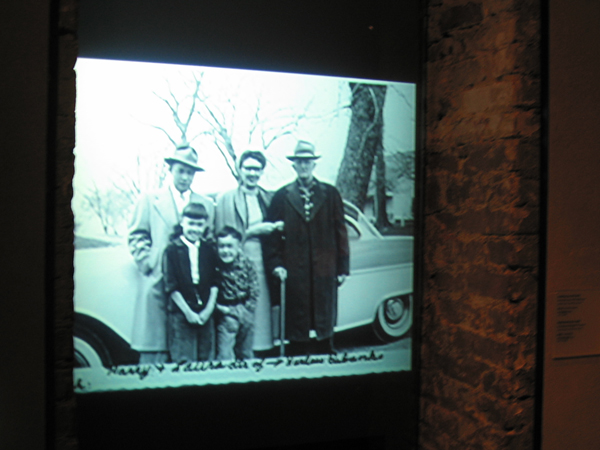The first time I went to New York's Museum of Chinese in America was back in 2008, when they were still located on Mulberry Street. And quite honestly, I was disappointed. To be fair, they had already started to pack some of their exhibits for the move to their current location. But still, the location looked more like an old office rather than any museum.
Recently, I had the pleasure to finally visit their new location at 215 Centre Street. And I must say, the difference is night and day.
Upon first walking in, the new 1400 square feet of space immediately made me know I was in for a much better experience this time around. The space is nicely decorated with a primarily brick facade. The location consists of two floors, a street level and a basement. The street level is separated into galleries for various exhibits, meeting and presentation areas, and a gift shop/lobby. The lower floor seems to used for offices and classrooms.
The various exhibits show what Chinese Americans have gone through since the birth of the country in the late 1700's. For example, there are collections of drawings, photographs, and artifacts that feature the Anti-Chinese sentiment during the 1800's, all leading up to the 1882 Chinese Exclusion Act.
Other exhibits highlight the popularity of Chinese laundry services and restaurants in early America. Items like old restaurant menus and photos of these businesses are really interesting in showing how these businesses were able to thrive during that era.
One of the more revealing exhibits portray what Chinese Americans went through during World War II. During the war itself, many Chinese Americans fought in the U.S. armed forces along side other American soldiers of other races. In fact, given the hostilities between Japan and China at the time, there was a "common enemy" factor for many Chinese Americans. However, after the war, there was growing anti-Chinese sentiment in America, because China had adopted a Communist government at that time. So despite Chinese Americans' contributions to the war effort, they became the subjects of distrust and suspicion.
Incidentally, one of the most interesting items at the museum is a booklet from that period. Given the prejudice against Japanese Americans during the war, the booklet was a guide on how to tell the difference between people of Chinese decent and those of Japanese decent.
On the more modern side, the museum contains a "video wall" exhibit entitled 'Many Voices, One Humanity'. Numerous monitors play short video biographies of today's notable Chinese Americans. For example, there are videos about John Liu, New York City Councilman and newly elected comptroller, and Anna Sui, famous fashion designer. These videos contain personal interviews in which these distinguished individuals talk about how their Chinese culture have affected them.
Unlike most of the other galleries at the MOCA, one of the galleries is unusually bright. It contains the exhibit 'Here & Now: Chapter III Towards Transculturalism', a collection of paintings, sculptures, and videos. Unlike the other exhibits, this one does not pertain to Chinese American history. However, it does feature works by four artists of Chinese descent, Emily Cheng, Hung-Chih Peng, YoYo Xiao and Shen Chen. All presented provocative and instriguing works.
One of the most interesting aspects of the museum are glass panel video displays scattered throughout the first floor. These displays continuously show short films (about 4-5 minutes) about various Chinese Americans and their stories. They range from early impactful Chinese Americans like journalist Wong Chin Foo (b 1851) and entrepreneur Charlie Toy (b. 1859) to more recent personalities like educator Bonnie Lew (b. 1946) and Helen Zia (b. 1952).
Similar to these video displays, there are also what would be best described as "lighted name plates" spread out among the galleries. Each of these plates features Chinese Americans who have made great contributions in various industries. For example, in the field of agriculture, Lue Gim Gong is credited with the development of the Valencia orange. In the field of politics, Elaine Chao was the first Chinese American to be appointed to an American President's cabinet. Sports-wise, athletes like Michael Chang and MIchelle Kwan are recognized for their accomplishments in tennis and figure skating respectively.
In addition to exhibits, MOCA also holds various special programs and events featuring various Chinese artists, performers, and cultural occasions. For more information on their schedule, you can visit their website at
http://www.mocanyc.org.
Personally, I found all the exhibits at the MOCA to be very engaging. Overall, it was a very nice way to spend the afternoon, and I look forward to returning for another visit. For a virtual tour, this is a video prepared by MOCA featuring Maya Lin:

